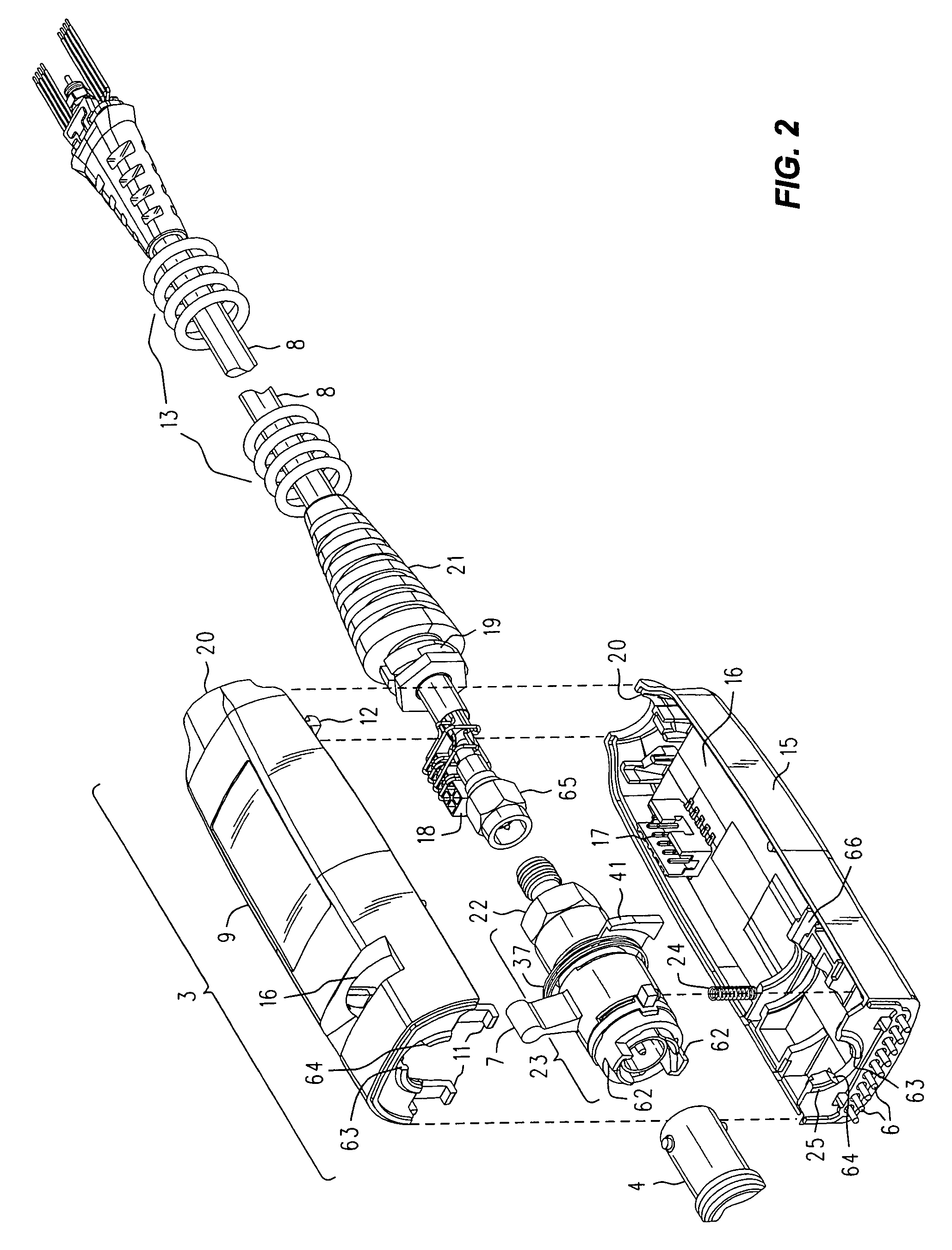Positive locking push-on precision BNC connector for an oscilloscope probe
a technology of push-on and probe, which is applied in the direction of coupling device connection, coupling parts engagement/disengagement, testing/measuring connector, etc., can solve the problems of affecting the quality of the connection, affecting the accuracy of the probe, so as to achieve the effect of easy engagemen
- Summary
- Abstract
- Description
- Claims
- Application Information
AI Technical Summary
Benefits of technology
Problems solved by technology
Method used
Image
Examples
Embodiment Construction
[0031]Refer now to FIG. 1, wherein is shown a front perspective view 1 of an electronic instrument 2, such as a digital oscilloscope, having one or more front panel female BNC connectors 4 that receive a positive locking push-on precision male BNC connector assembly 3 (pod housing), say, in support of operation with an active probe (not shown) connected at a distal end of a cable 8. In a manner similar to that explained in the incorporated '841 patent, the positive locking push-on precision BNC connector pod housing is installed by first lining it up and then pushing it toward the scope. That engages the BNC detents, and a simple motion with the thumb against the lever 7 performs a positive locking that fully and forcefully mates the two BNC connector halves. When the pod housing 3 is locked, not only is a precision BNC connection established with connector 4, but a row of spring loaded pins 6 (not visible) on the front of the housing for the push-on assembly 3 engages a row 5 of co...
PUM
 Login to View More
Login to View More Abstract
Description
Claims
Application Information
 Login to View More
Login to View More - R&D
- Intellectual Property
- Life Sciences
- Materials
- Tech Scout
- Unparalleled Data Quality
- Higher Quality Content
- 60% Fewer Hallucinations
Browse by: Latest US Patents, China's latest patents, Technical Efficacy Thesaurus, Application Domain, Technology Topic, Popular Technical Reports.
© 2025 PatSnap. All rights reserved.Legal|Privacy policy|Modern Slavery Act Transparency Statement|Sitemap|About US| Contact US: help@patsnap.com



